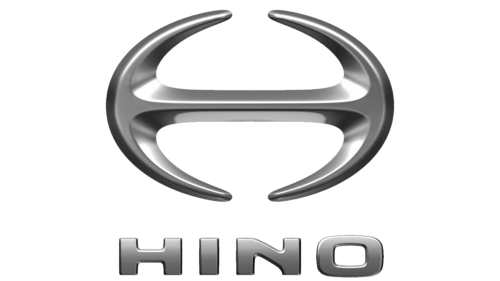The Hino logo creates an image of perfection and harmony. The brand constantly evolves in various directions and stands as a model of reliability and performance. The emblem reflects strength and stability.
Hino: Brand overview
Emerging from the roots of the Tokyo Gas and Electric Industry Company, Hino began its journey into the automotive world in 1910, delving into the creation of buses and trucks. By 1937, recognizing the burgeoning potential of the auto sector, the vehicle-making facet of the company branched out, christening itself Tokyo Automobile Industry Co. Ltd, which incorporated the Hino-named truck range.
The specter of World War II in 1942 led the Hino truck segment to decouple from Tokyo Automobile, giving birth to Hino Heavy Industry Co. Ltd. The post-war era witnessed Hino’s resurgence as it amplified its commercial vehicle output, with its prime emphasis on medium—-and heavyweight diesel trucks.
In the 1960s, Hino allied with international giants such as Renault. In 1967, evolving with its expanding portfolio, the company rebranded itself as Hino Motors, securing a formidable foothold in Japan’s truck industry over successive years.
A monumental step in Hino’s history was the inauguration of its maiden foreign manufacturing facility in Ontario, Canada, in 2006. Since then, the company’s manufacturing footprint has extended to regions like Vietnam and Indonesia. Fast-forward to the present, Hino Motors stands tall as one of Asia’s premier commercial vehicle producers, with a prolific lineup of trucks, buses, and diesel engines and factories dotting the landscapes of Asia, North America, and Europe.
Meaning and History
What is Hino?
Established on May 1, 1942, Hino Motors, Ltd. is a dominant player in Japan’s automotive industry. The company, headquartered in Hino, Tokyo, is widely recognized for manufacturing commercial vehicles and diesel engines. Hino’s extensive product range includes a variety of robust trucks, buses, and other diesel-engine-powered vehicles. Since its separation from Toyota Motor Corporation in 1942, Hino Motors has emerged as an industry pioneer in commercial vehicles and diesel engines. With a steadfast dedication to progressive ideas and advancements, Hino continually challenges existing norms, securing its status as an industry leader.
1917 – 1994
In 1917, Tokyo Gas and Electric Industry entered the automotive industry by creating the TGE “A-Type” truck. This event marked the start of what would later become a separate company specializing in buses, trucks, and, eventually, passenger cars.
The Hino brand was officially established in 1942. Its first logo featured a graceful and elegant design with the company name written in black calligraphic letters. The initial “H” had an elongated downward stroke, giving the logo a unique and memorable appearance. Each line in the logo was clear and precise, symbolizing the quality and attention to detail inherent in the company’s products.
A return line extending from the final letter “O” emphasizes the entire name. This line was a nod to the company’s history, reminding that the Hino brand had origins predating its official establishment and continuing the traditions set by its predecessors.
1994 – today
By the end of the 20th century, Hino updated its logo to reflect the brand’s evolution and technological advancements. The new logo symbolized reliability and stability through the image of a double anchor.
The iron double anchor represents the strength and durability essential for Hino’s vehicles. These qualities are crucial for Hino, especially when reliability is key in manufacturing trucks and buses.
The anchors pointing forward and backward emphasize the company’s philosophy: respect for past experiences and achievements and a focus on future goals. With its rich heritage, Hino always sets new objectives and strives for innovation and continuous development.
The shape of the anchors forms an incomplete steering wheel, symbolizing constant movement and evolution. This indicates that the company has many developments and ideas ahead. The unfinished wheel suggests that Hino is in a continuous process of improvement and striving for perfection.





